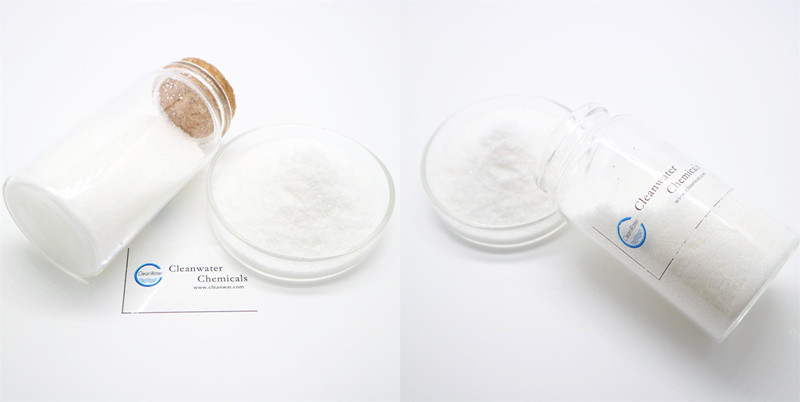Among the industrial wastewater treatment, printing and dyeing wastewater is one of the most difficult-to-treat wastewaters. It has complex composition, high chroma value, high concentration, and is difficult to degrade. It is one of the most serious and difficult-to-treat industrial wastewaters that pollute the environment. The removal of chroma is even more difficult among the difficulties.
Among the many printing and dyeing wastewater treatment methods, the use of coagulation is the most widely used method in enterprises. At present, the conventional flocculants used in textile printing and dyeing enterprises in my country are aluminum-based and iron-based flocculants. The decolorization effect is poor, and if the reactive dye is decolorized, there is almost no decolorization effect, and there will still be metal ions in the treated water, which is still very harmful to the human body and the surrounding environment.
Dicyandiamide formaldehyde resin decoloring agent is an organic polymer flocculant, quaternary ammonium salt type. Compared with traditional common decolorizing flocculants, it has a fast flocculation speed, less dosage, and is affected by coexisting salts, PH and Advantages such as less influence of temperature.
The dicyandiamide formaldehyde resin decoloring agent is a flocculant mainly used for decolorization and COD removal. When using it, it is recommended to adjust the pH value of the wastewater to neutral. Please communicate with the technicians for specific usage methods. According to many cooperation Feedback from printing and dyeing manufacturers is that the dicyandiamide formaldehyde resin decolorizer has a significant effect on the decolorization of printing and dyeing wastewater. The chroma removal rate can reach more than 96%, and the removal rate of COD has also reached more than 70%.
Organic polymer flocculants were first used in the 1950s, mainly polyacrylamide water treatment flocculants, and polyacrylamide can be divided into non-ionic, anionic, and cationic. In this article, we will understand the acrylamide polymer dicyandiamide formaldehyde resin decolorizing flocculant which is salted with quaternary amine among the cationic organic polymer flocculants.
The dicyandiamide formaldehyde resin decolorizing flocculant is firstly reacted with acrylamide and formaldehyde aqueous solution under alkaline conditions, then reacted with dimethylamine, and then cooled and quaternized with hydrochloric acid. The product is concentrated by evaporation and filtered to obtain a quaternized acrylamide monomer.
The dicyandiamide-formaldehyde condensation polymer decolorizing flocculant was introduced in the 1990s. It has a very excellent special effect of removing the color of dye wastewater. In the treatment of high-color and high-concentration wastewater, only polyacrylamide or polyacrylamide is used. Polyaluminum chloride flocculant cannot completely remove the pigment, and after adding the decolorizing flocculant, it neutralizes the negative charge attached to the dye molecules in the wastewater by providing a large amount of cations and thus destabilizes Finally, a large number of floccules are formed, which can absorb the dye molecules after flocculation and destabilization, so as to achieve the purpose of decolorization.
How to use decolorizer:
The method of using decolorizing flocculant is similar to that of polyacrylamide. Although the former is in liquid form, it needs to be diluted before it can be used. The manufacturer recommends that it be diluted by 10%-50%, and then added to the waste water and fully stirred. Form alum flowers. The colored matter in the colored wastewater is flocculated and precipitated out of the water, and is equipped with sedimentation or air flotation to achieve separation.
In the printing and dyeing, textile and other industries, the water consumption is very large and the reuse rate is low. Therefore, the waste of water resources is very common. If the process is used to conduct advanced treatment and recycling of this high-color and high-concentration industrial wastewater, Not only can it save a lot of fresh industrial water resources, but it can also directly reduce the discharge of industrial wastewater, which is of great and far-reaching significance for promoting the sustainable development of printing, dyeing and textile industries.
Excerpted from Easy Buy.
Post time: Nov-16-2021


